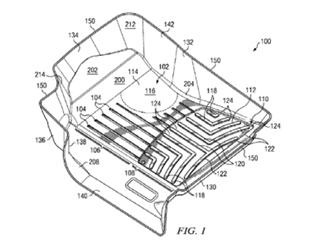The US Court of Appeals for the Federal Circuit affirmed the Patent Trial & Appeal Board invalidating two patents: one as anticipated because disclosure of a genus anticipated the claimed species, and the other as obvious because the prior art did not disparage the claimed invention and therefore was not a “teaching away.” The Court also found that free samples cannot be used to show commercial success. Incept LLC v. Palette Life Sciences, Inc., Case Nos. 21-2063; -2065 (Fed. Cir. Aug. 16, 2023) (Schall, Taranto, JJ.) (Newman, J., concurring in part, dissenting in part).
Incept owns two patents related to improved methods for treating cancer, particularly prostate cancer, using radiation. The patents describe methods of introducing a filler between a radiation-targeted tissue and other tissue to increase the distance between the two and thereby decrease the amount of radiation received by the non-targeted tissue. Palette filed inter partes review petitions against each patent, asserting that the claims of one patent were anticipated and the claims of the other were obvious. Both theories of invalidity relied on the same prior art reference, Wallace. The Board instituted review and ultimately found both patents unpatentable. Incept appealed.
As to the patent that the Board found anticipated, Incept argued that the Board erred legally by “picking and choosing” from the teachings of Wallace to piece together elements. Incept argued that Wallace teaches a genus of millions to billions of possible compositions while its patent claims a species. Thus, according to Incept, the genus had to be defined well enough that a person of ordinary skill could have envisioned each member of the genus.
The Federal Circuit found no legal error in the Board’s anticipation analysis. The Court rejected Incept’s assertion that its patent claimed a species, finding that the patent described a method to inject a composition that had the same general properties as the composition described in Wallace. The Court also found that the Board’s conclusion that Wallace taught biodegradable compositions (where Wallace stated that “a portion of the polymer may be biodegradable”) was supported by substantial evidence and noted that it was not the Court’s duty to reweigh factual determinations.
As to the Board’s obviousness finding of the other patent, Incept alleged that the Board improperly reiterated its anticipation analysis, disregarded statements in Wallace that teach away, did not separately analyze the dependent claims and disregarded evidence of commercial success. The Court was unpersuaded by any of these arguments.
First, the Federal Circuit noted that since the anticipation analysis had no error, it was not improper for the Board to rely upon that analysis for its obviousness determination. The Court noted that the Board relied on the teachings of another piece of prior art concerning the challenged patent’s displacement limitation. The Court also dismissed Incept’s allegation that the motivation to combine analysis was conclusory.
The Federal Circuit rejected Incept’s assertion that Wallace taught away from biodegradable compositions, noting that Wallace provided a preference for an alternative but did not criticize, discredit or [...]
Continue Reading
read more


 Subscribe
Subscribe




